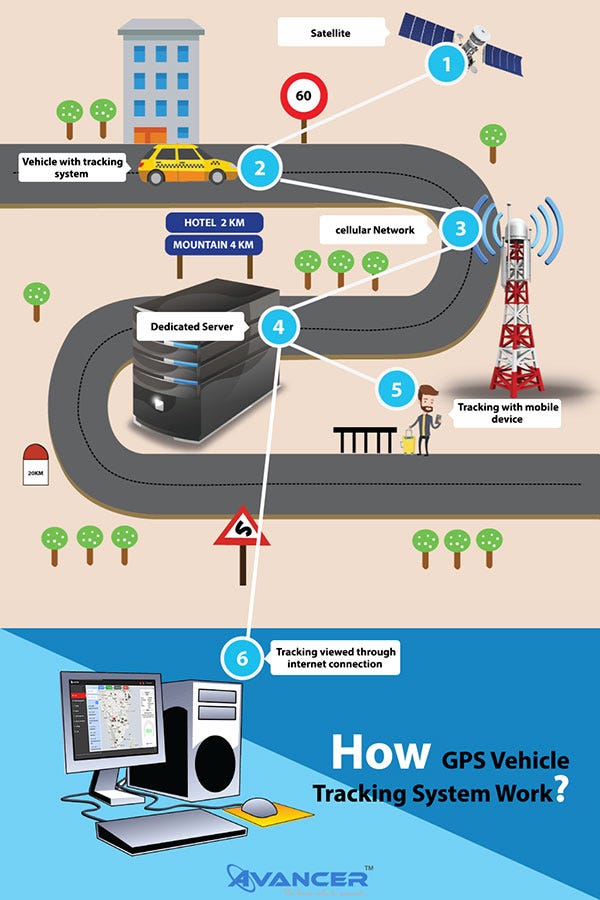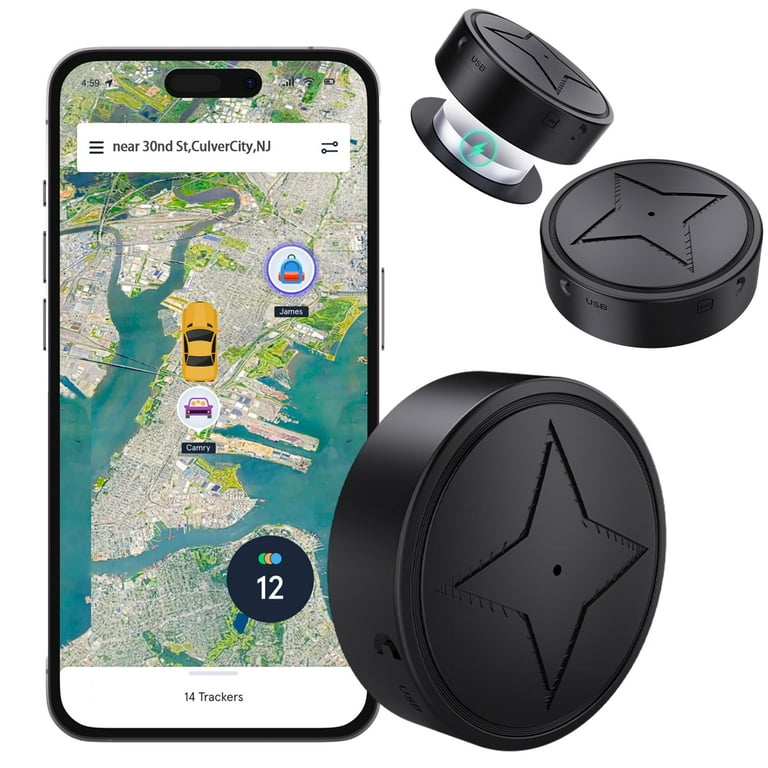Recognizing GPS Tracking: Innovation, Applications, and Advantages
Recognizing GPS Tracking: Innovation, Applications, and Advantages
Blog Article
Optimizing Efficiency With GPS Tracking: Methods for Fleet Management and Asset Tracking
In the world of fleet monitoring and property surveillance, the utilization of general practitioner tracking systems has come to be a cornerstone for improving functional performance and performance. By using the power of real-time information, companies can simplify their logistics, maximize paths, and enhance overall fleet efficiency. The true possible lies not only in the application of these innovations but also in the strategic application of the insights they supply. From boosting driver safety to making educated decisions based on detailed data analytics, the chances are huge. As we check out the various strategies and techniques to maximize efficiency with GPS tracking, a world of possibilities opens up to redefine exactly how companies manage their fleets and check their properties.
Carrying Out Real-Time Monitoring Solutions
To optimize operational efficiency, business can apply real-time tracking systems that give prompt location data for their possessions. By using GPS innovation, services can get real-time insights right into the location of their lorries, devices, and other important resources. This level of presence allows firms to enhance operations, improve efficiency, and boost general efficiency.
Real-time radar offer various advantages for business across numerous markets. With the ability to keep an eye on properties continually, companies can optimize routing, schedule maintenance more efficiently, and minimize the threat of theft or loss. In addition, these systems allow companies to respond without delay to any type of unforeseen occasions or disruptions, guaranteeing minimal downtime and optimum effectiveness.
Implementing real-time radar calls for cautious preparation and consideration of particular business demands. Companies have to choose the ideal technology service provider, personalize the system to fulfill their demands, and provide appropriate training to employees. By investing in real-time tracking solutions, organizations can stay ahead of the competitors, deliver exceptional customer support, and achieve lasting growth in today's busy market environment.
Enhancing Path Preparation and Scheduling

One key approach for optimizing path planning is to utilize historical data and real-time information to recognize the most efficient courses for lorries. By examining past courses and taking into consideration factors such as web traffic patterns and shipment home windows, organizations can create schedules that reduce unneeded stops and hold-ups. Furthermore, applying dynamic transmitting abilities allows for adjustments to be made in real-time based on altering conditions, making certain that drivers always take one of the most effective course to their destination.
Enhancing Vehicle Driver Efficiency and Safety
Enhancing driver efficiency and safety is paramount in guaranteeing the smooth and secure operation of a fleet. By utilizing general practitioner tracking technology, fleet managers can check official website vehicle driver habits in real-time and offer immediate responses to advertise risk-free driving methods. This consists of tracking speed restrictions, extreme braking, velocity patterns, and adherence to web traffic policies.
In addition, general practitioner tracking systems can help in identifying drivers who might need additional training or support to boost their efficiency (gps tracking). By analyzing information on driving behaviors and patterns, fleet supervisors can implement targeted training programs to resolve certain locations of enhancement. This positive technique not just boosts overall motorist performance however likewise adds to a safer work important source atmosphere for every person entailed
In addition to efficiency surveillance, GPS tracking systems can likewise boost driver safety by offering emergency support features. In the event of an accident or breakdown, chauffeurs can rapidly send out call for help, enabling fleet managers to react without delay and dispatch aid when required. In general, incorporating GPS tracking innovation into fleet monitoring methods is crucial for optimizing motorist performance and ensuring the security of both motorists and assets.

Making Use Of Geofencing for Improved Protection
Taking full advantage of fleet security goes past keeping an eye on vehicle driver performance and security; one effective method is with the strategic use of geofencing technology. Geofencing enables fleet managers to develop virtual boundaries or geozones around certain areas, enabling them to obtain real-time informs when lorries enter or exit these assigned locations. By establishing up geofences around risky areas such as building and construction sites, unauthorized areas, or even client areas, fleet supervisors can boost security steps and minimize possible dangers.
Geofencing not just improves security yet additionally makes it possible for quick response times in case of unauthorized vehicle use or theft. In case of a breach, informs can be sent to fleet supervisors, enabling them to take prompt activity to recover the automobile and find. Furthermore, geofencing can help in checking automobile motion during off-hours, guaranteeing that vehicles are not being utilized for unauthorized purposes.
Incorporating GPS Information for Strategic Decision-Making
Utilizing GPS information assimilation is important for informed calculated decision-making in fleet administration procedures. By integrating GPS information into fleet management systems, services can gain useful understandings into their procedures, resulting in much more efficient courses, boosted vehicle driver behavior, and much better general performance. Through the assimilation of GPS information, fleet managers can track automobile places in real-time, display gas intake, and assess chauffeur efficiency metrics such as speed, idling time, and extreme braking.
Furthermore, integrating GPS information permits for the optimization of routes based upon website traffic problems, climate index patterns, and various other outside aspects, assisting to decrease delivery times and functional expenses. By evaluating historical GPS data, fleet supervisors can identify fads, patterns, and areas for enhancement, enabling them to make data-driven choices that improve productivity and simplify operations.
Final Thought
Finally, the application of GPS radar can considerably improve effectiveness in fleet monitoring and property tracking. By making use of real-time monitoring, maximizing route preparation, improving chauffeur efficiency, utilizing geofencing for safety and security, and incorporating GPS data for tactical decision-making, companies can accomplish and improve operations cost financial savings (gps tracking). These methods allow companies to enhance processes, rise productivity, and inevitably make the most of the total effectiveness of their operations
In the world of fleet management and property tracking, the utilization of General practitioner tracking systems has become a cornerstone for improving functional effectiveness and productivity. As we check out the numerous techniques and strategies to make best use of performance with GPS monitoring, a world of opportunities opens up to redefine just how organizations handle their fleets and monitor their possessions.
By using GPS monitoring technology, fleet supervisors can keep an eye on motorist actions in real-time and provide immediate comments to promote risk-free driving techniques. With the assimilation of GPS information, fleet supervisors can track vehicle areas in real-time, screen gas intake, and analyze driver efficiency metrics such as rate, idling time, and extreme braking.
In final thought, the application of GPS tracking systems can significantly improve efficiency in fleet management and possession monitoring.
Report this page